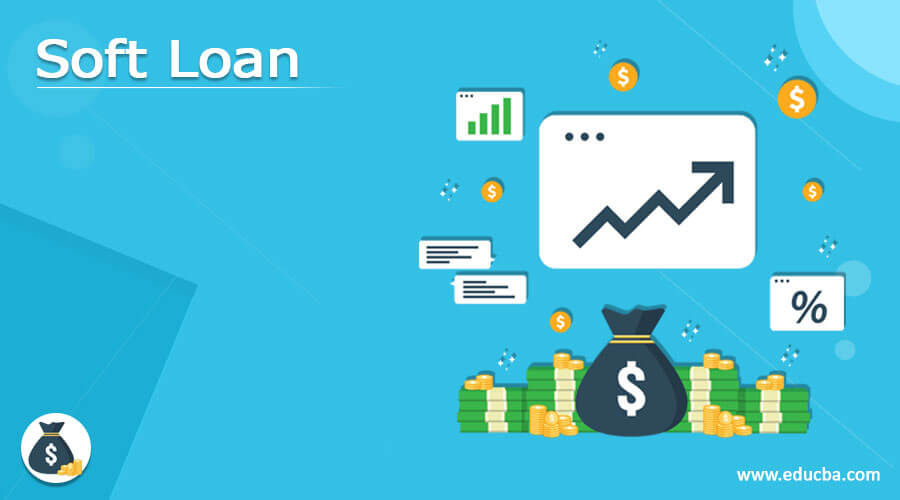Updated July 7, 2023

What is a Soft Loan?
The term “soft loan” refers to the type of loan that bears no interest or a below-market interest rate. In addition, these loans usually have very lenient terms, such as interest holidays, extended grace periods wherein the borrower only needs to service interest, etc.
Besides, these loans are offered longer amortization schedules (up to 50 years in some cases) than traditional bank loans.
Soft loans are usually offered to developing or emerging economies by international financial institutions, such as World Bank affiliates, Asian Development Bank, or government institutions. These borrowers are otherwise unable to raise from the global at favorable rates. Soft loans are also known as “concessional funding” or “soft financing.”
Key Takeaways
Some of the key takeaways of the article are:
- Soft loan refers to loans extended to emerging countries by developed nations or international financial institutions, such as IFC, ADB, CDC, etc.
- These loans are offered to growing economies at next-to-no interest rates with fairly lenient terms, such as extended grace periods.
- In the case of government lenders, these loans help forge long-term strategic ties between the borrowing and the lending countries.
- Despite so many benefits, soft loans can result in a debt trap if the borrowing countries fail to manage them judiciously and use them appropriately.
How Does Soft Loan Work?
Soft loans are offered to emerging nations to promote and help shape the economic and political relations between the weaker nations and the developed ones. In this way, lenders with a particular interest in a nation can develop healthy relationships with the borrowing nations and gain preferential access to their resources and assets. It is a win-win situation for the involved parties.
Besides, soft loans also provide attractive trading opportunities and lending that help cultivate more profound and broader diplomatic and political ties with the borrowers. Especially in the case of government institutions, these loans are useful to forge associations between countries involved in the process. In the last decade, many countries like the US and China have been instrumental in extending support to various emerging and developing economies.
Examples of Soft Loan
Let us look at the following illustration to understand how soft loans function in the real world.
As per the China-Africa Study Initiative of the Johns Hopkins University School of Advanced International Studies, the Chinese government extended loans worth $10.7 billion to Ethiopia from 2010 to 2015. This aid also included a $23 million grant and soft loan package intended to finance infrastructural growth in Ethiopia, such as power lines, industrial parks, wireless networks, highways, and a railroad connecting Addis Ababa’s and Djibouti.
The soft loan was a significant part of China’s idea to support Ethiopia in developing a cordial relationship with them and promote trading opportunities between the Asian giant and the African country. However, this assistance package from China pushed the country’s debt-to-GDP ratio to 88%. It was alarming as it indicated a higher probability of default. But China again came to its rescue and agreed to restructure some of the loans and expand the loan maturity periods by 20 years to reduce the repayment obligations in the near term.
Source: Bloomberg
Who Offers a Soft Loan Scheme?
Mostly soft loans are extended by credible international financial institutions or government agencies, as below:
- International banks, the global capital market, and export credit agencies
- Large financial institutions, such as Asian Development Bank (ADB), Commonwealth Development Corporation (CDC), International Finance Corporation (IFC – World Bank Group), etc.
- Foreign individuals with equity holdings listed by the central bank of the country
- Equipment suppliers provided that the funded loan didn’t exceed the equipment cost.
- Any other entity approved by the central bank of the country after consultation with the government
Advantages of Soft Loan
Some of the significant advantages of soft loans are as follows:
- First, emerging nations get access to more accessible long-term funding to finance their growth and expansion.
- It helps those businesses thrive, which otherwise fail to flourish due to inadequate funds from other sources.
- It helps build diplomatic and political associations and healthy trade relations between emerging nations and developed countries.
- Soft loan financing allows economic collaboration wherein all the involved countries benefit from the growing relationship.
- The borrowing country’s government can encourage the local businesses to use the fund to finance their expansion and, eventually, the company’s economic growth.
Disadvantages of Soft Loan
Some of the significant disadvantages of soft loans are as follows:
- In many cases, the borrowing countries fail to manage the soft loans judiciously, getting them into a debt trap.
- Given the lenient terms of the loans, many businesses don’t take them seriously, which leads to their failure. It eventually results in a devastating impact on the overall economic growth of the borrowing country.
Conclusion
Soft loans are necessary economic support to countries with weak profiles and a severe need for funds to grow and develop. The terms of these loans are usually very lenient in comparison with traditional loans. The upcoming businesses in emerging countries should use these loans to grow, expand, and eventually help the nation’s overall development. If used in a well-organized and planned manner, these loans can significantly help nation-building.
Recommended Articles
This article is a guide to Soft Loans. Here we also discuss the definition, working, examples, and who offers a soft loan scheme and its advantages and disadvantages. You may also have a look at the following articles to learn more –

